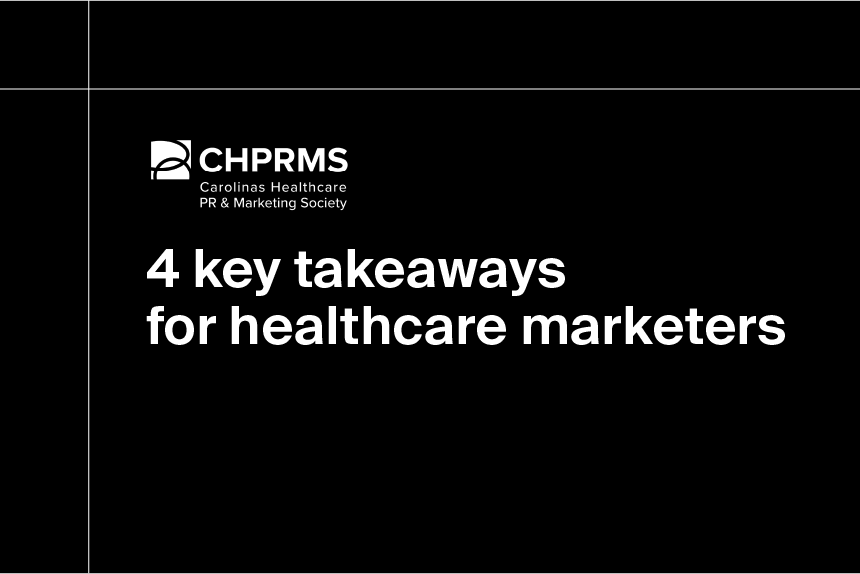4 revenue cycle management trends that should be on every leader’s radar
Jul 30th, 2025

It’s no secret that the financial health of any healthcare organization is tightly linked to the efficiency and effectiveness of its revenue cycle management (RCM) process. And with healthcare leaders facing rising costs, complex regulations and legislation, and shifting patient demands, a seamless, resilient RCM system has become a strategic imperative.
These challenges are driving meaningful change in the RCM space. Let’s dig into four emerging revenue cycle management trends impacting the healthcare industry we think you should keep on your radar.
Increased adoption of AI and automation
The adoption of AI and automation in revenue cycle management is accelerating fast—and this year, it’s clear that organizations are moving beyond isolated use cases to more strategic, enterprise-wide deployments. Faced with persistent staffing shortages, tighter margins, and mounting administrative complexity, healthcare systems are turning to intelligent automation as a force multiplier.
AI is now playing a role across the entire revenue cycle. On the front end, tools are automating patient eligibility checks, generating real-time estimates, and reducing data entry errors at registration. In the middle of the cycle, natural language processing (NLP) is powering smarter coding suggestions, while machine learning models flag claims likely to be denied—before they’re even submitted. On the back end, robotic process automation (RPA) is accelerating remittance posting, payor follow-ups, and reconciliation.
What’s gaining momentum in 2025 is the move from siloed tools to connected, AI-driven workflows that span departments. Rather than automating single tasks, leading organizations are integrating intelligent systems that make real-time decisions, improve accuracy, and keep claims moving with minimal manual intervention. The early results are compelling: Faster cash flow, fewer denials, and significant reductions in the cost to collect.
But automation isn’t just about cutting costs. In an environment where doing more with less has become the norm, AI is helping RCM teams operate with greater speed, precision, and scalability.
Patients are becoming more involved in their own care
As the healthcare consumerism movement continues to gain traction, we’re seeing patients become more active and involved in both clinical decisions and financial responsibilities.
Today’s patients expect the same clarity, convenience, and seamless experience they would get from other service industries. That means upfront pricing, digital tools that mirror retail experiences, and flexible payment options that match their financial realities. Providers are responding by investing in platforms that offer personalized estimates, self-service bill pay, mobile-first communications, and tailored financing plans. And leading organizations are seeing the pay off. These changes do more than improve collections; they also enhance trust and satisfaction during what has traditionally been one of the most frustrating parts of the care experience.
Healthcare organizations are also rethinking the tone and timing of their outreach. Instead of waiting until a bill is past due, forward-looking systems are engaging patients earlier—before or at the point of service—with proactive messaging about costs, payment options, and financial assistance. Some are even integrating cost conversations into the care planning process, helping patients make more informed choices that align with their coverage and budget.
Managing claim denials is becoming more proactive
Claims denials have long been a costly, resource-draining aspect of the RCM process, often leading to delayed payments, increased administrative costs, and lost revenue. To address these challenges, leading healthcare organizations are shifting away from a reactive approach to denial management to one that is more proactive.
Historically, denial management has been a back-end scramble—claims get rejected, staff investigate why, and appeals are filed. The model works, but it’s hard to describe it in any way other than inefficient, expensive, and slow. Industry data shows that up to 65% of denied claims are never reworked, and every reprocessed claim can cost upwards of $25 in labor. Clearly, there must be a better way.
Today’s RCM leaders are adopting a prevention-first mindset, powered by better data and smarter technology. Predictive analytics tools are being used to identify denial-prone claims before submission, based on patterns from historical data. AI algorithms can flag documentation gaps, coding inconsistencies, or payor-specific requirements that would otherwise lead to rejections. These insights allow teams to correct errors upstream—well before a denial occurs.
The result? Higher first-pass resolution rates, fewer costly appeals, and faster payments. But perhaps more importantly, proactive denial prevention frees staff to focus on more strategic, high-value work instead of chasing avoidable issues.
Data integration and interoperability are more important than ever
In an industry that demands speed, transparency, and precision, revenue cycle success hinges on how well data flows across an organization’s systems, departments, and even to other providers. The days of siloed billing platforms, disconnected EHRs, and manual workarounds are becoming increasingly untenable.
Modern revenue cycle management depends on real-time data exchange. Clinical, administrative, and financial systems must communicate seamlessly to ensure accurate coding, timely claims submission, and effective patient communication. Yet many organizations still face integration gaps that delay revenue, increase errors, and obscure visibility into key performance metrics.
Forward-looking health systems are investing in API-enabled platforms and partnering with data warehouses that can ingest, clean, and normalize data from across the enterprise. This makes it possible to build real-time dashboards, automate workflows, and gain a clearer view of the entire revenue cycle—from patient access to final payment. The ultimate goal is end-to-end visibility—allowing RCM teams to spot delays, track key KPIs, and make smarter decisions based on complete, trustworthy data.
Learn more
These days, the revenue cycle management process is as much a strategic asset as any other function of your business. With so many changes coming to the market, the ability to adapt to trends quickly is essential. For more tips, best practices, and insights, check out our guide to optimizing your healthcare RCM to improve cash flow.
Staying competitive means making smarter, faster decisions based on real data. That’s where Definitive Healthcare can help.
If you’re a software & healthcare IT organization looking to help providers enhance their RCM process, offer a streamlined billing experience, or simply better understand their patients, our solutions can help you. Start a free trial today for insights into the accounts that would benefit most from your solution or to identify the right stakeholders and decision-makers to engage with.



